THE SACRED TREE / L’ARBRE SACRE
– UNESCO Courier, Jan, 1989 by Jacques Brosse
The destinies of men and trees
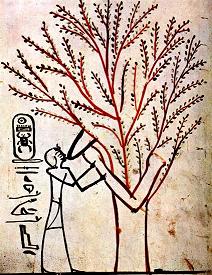 The ties that bound the destinies of men and trees were so strong, among the peoples of every continent, that it Is natural to feel anxious about the future prospects of a human race that has broken them. Be that as it may, if an attempt is to be made to avert the very real danger that deforestation represents for our planet, it seems necessary to examine, however briefly, the relationships that existed between men and trees until the present century.
The ties that bound the destinies of men and trees were so strong, among the peoples of every continent, that it Is natural to feel anxious about the future prospects of a human race that has broken them. Be that as it may, if an attempt is to be made to avert the very real danger that deforestation represents for our planet, it seems necessary to examine, however briefly, the relationships that existed between men and trees until the present century.
The Primal Tree
All over the world there were lingers on the memory of a giant tree, the primal tree, rising up from the centre of the Earth to the heavens and ordering the universe around it. It united the three worlds: its roots plunged down into subterranean abysses, Its loftiest branches touched the empyrean. Thanks to the Tree, it became possible to breathe the air; to all the creatures that then appeared on Earth it dispensed its fruit, ripened by the sun and nourished by the water which it drew from the soil. From the sky it attracted the lightning from which man made fire and, beckoning skyward, where clouds gathered around its fall. The Tree was the source of all life, and of all regeneration. Small wonder then that tree-worship was so prevalent in ancient times.
Around the world
In torrid Egypt the sacred sycamore reigned, and in icy Scandinavia, land of the Teutons, Ygdrasill, the ash. Acvattha, the pipal (Ficus religiosa) of India, is identified with Brahman and at its foot the Gautama Buddha attained Enlightenment.
 In China, Kien-mou, the “erect wood”, stood at the centre of the empire and of the world. For the ancient Mexicans, the cosmic tree sprang up in all its many colours from the belly of the earth-goddess in the fifth dimension of space, which unites the upper realm to the lower.
In China, Kien-mou, the “erect wood”, stood at the centre of the empire and of the world. For the ancient Mexicans, the cosmic tree sprang up in all its many colours from the belly of the earth-goddess in the fifth dimension of space, which unites the upper realm to the lower.
Until recently, the sacred tree in Africa was the kilena of the Dogon, the balanza of the Bambara and the ase of the Dahomans, the ancestral tree, the abode of the god and of humanity.
Some American communities went so far as to regard the sacred tree as the place of their birth.
Tree and God
In most cases, a god uses the tree as his dwelling on Earth, thereby making it sacred; sometimes he speaks to human beings through the medium of the tree. In Greece the oracle of Dodona was given by the rustling of the leaves of the oak of Zeus, which was interpreted by the priestesses officiating in the sanctuary. However, just as the gods come down from the trees, so human beings can climb them in order to reach the sky and meet them there. So it is with the Siberian shaman who goes up into the birch tree; so it is with the Arunta initiate who, in Australia, hoists himself up to the top of the sacred post, in the form of a tree without branches.
Some trees bore the mark of a particular god and were especially revered. But all trees were considered to possess a soul. They were inhabited by spirits whose bodies they formed-dryads, hamadryads and caryatids in Greece, lechy and roussalki among the Slav peoples. Hence no cut could be made in a tree until the tree-spirit had been requested to remove itself. The felling of sacred trees was always punishable by death. Ronsard, the great sixteenth-century French poet, echoed these folk beliefs in his sublime “Elegy Against the Woodcutters of Gatine”.
The idea of a divine tree naturally gave rise to a belief in a sacred grove, which achieved the status of a religious institution, not only among the Greeks, Romans and Celts, but also in Iran, throughout Asia, and in Africa and America. Vestiges of these sacred groves still remain in India, China and Japan, and among the Berbers in North Africa. In former times there was no other sanctuary. The sacred grove inspired reverence and fear and was ringed around with severe interdictions, but it was also the place where initiates gathered and received secret oral teachings from the priests. The sacred grove was at the origin of the temple, whose columns were initially trees, and later of the Christian church which still evokes it by the alignment of its pillars, the semi darkness within it, and the soft, coloured light that filters through its stained glass windows.
Sacred Tree
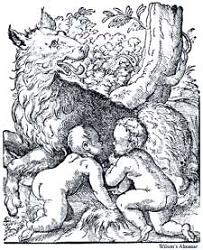 In former times kings would sit beneath a majestic tree to administer justice. Sometimes the sacred tree constituted the heart of the city, which it protected, and although in the process of urbanization the traces of this belief nearly always vanished, examples can still be found in the writings of Antiquity. In the centre of Eridu, the holy city, the Sumerians of the third millennium BC worshipped Kiskanu, the cosmic tree. On the Acropolis in Athens grew the olive tree planted by Athena, who had by that means taken possession of the land and founded the city. In the forum at Rome grew the fig tree under whose boughs Romulus and Remus were suckled. According to Tacitus the withering of the tree in the year 58 AD was considered to be of ill omen. The following year Nero killed his mother Agrippina and thereafter gave himself up to a life of unbounded cruelty and debauchery, triggering a crisis which almost brought about the downfall of the Roman empire.
In former times kings would sit beneath a majestic tree to administer justice. Sometimes the sacred tree constituted the heart of the city, which it protected, and although in the process of urbanization the traces of this belief nearly always vanished, examples can still be found in the writings of Antiquity. In the centre of Eridu, the holy city, the Sumerians of the third millennium BC worshipped Kiskanu, the cosmic tree. On the Acropolis in Athens grew the olive tree planted by Athena, who had by that means taken possession of the land and founded the city. In the forum at Rome grew the fig tree under whose boughs Romulus and Remus were suckled. According to Tacitus the withering of the tree in the year 58 AD was considered to be of ill omen. The following year Nero killed his mother Agrippina and thereafter gave himself up to a life of unbounded cruelty and debauchery, triggering a crisis which almost brought about the downfall of the Roman empire.
As well as being linked to the destiny of cities, trees could also be directly associated with the fate of individuals. A particular tree would be seen as a person’s double, affording him protection and communicating to him its vigour and also, so it was hoped, its longevity, which far exceeds that of human beings. All over the world trees were planted on the occasion of a child’s birth, and there after the twins constituted by the child and the tree would be considered to share the same fate. Great care was taken of the tree, for if it withered, the person would be in danger. Pliny relates that one famous Roman poured wine at the foot of his tree in order to fortify it.
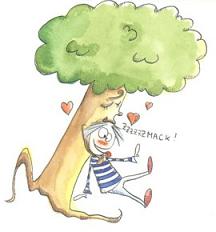 In certain traditional societies, this custom survived into the twentieth century. In some cases the link between a person and a tree was established when an attempt was made to heal a sick child by passing his naked body three times through a split made in the living wood. Once a widespread cure for rickets or hernia, this ritual would usually be carried out at sunrise, when the tree’s energy is at its peak. The sick child would draw on this energy and the tree take the sickness upon itself. After the ceremony the edges of the split would be brought together and sealed with clay. In this way a lasting affinity was created between child and tree. If the gash in the tree closed up, the child would be cured, but if it remained open, the sickness would persist. If the tree died, so would the child. When he grew up, a child treated in this way would take great care of his tree. Nobody else would be allowed to touch it.
In certain traditional societies, this custom survived into the twentieth century. In some cases the link between a person and a tree was established when an attempt was made to heal a sick child by passing his naked body three times through a split made in the living wood. Once a widespread cure for rickets or hernia, this ritual would usually be carried out at sunrise, when the tree’s energy is at its peak. The sick child would draw on this energy and the tree take the sickness upon itself. After the ceremony the edges of the split would be brought together and sealed with clay. In this way a lasting affinity was created between child and tree. If the gash in the tree closed up, the child would be cured, but if it remained open, the sickness would persist. If the tree died, so would the child. When he grew up, a child treated in this way would take great care of his tree. Nobody else would be allowed to touch it.
Equally widespread was the belief that trees harboured the souls of the dead: Among some peoples, such as the Warramunga of central Australia, it was thought that trees served as a refuge for souls before their reincarnation. The ancient Egyptians believed that the spirits (ba) of the newly-dead would alight in the form of birds on the branches of the sacred sycamore, and that the Lady of the Sycamore, the cow-goddess Hathor, would appear among the foliage and welcome them with water and bread. But often the souls are irascible and dangerous. This was the case in Korea and many other countries, where only the souls of those who had died a violent death took shelter in trees.
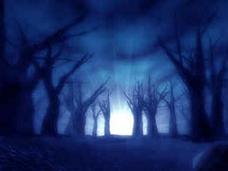 Elsewhere trees were believed to harbour souls who had been; condemned to remain on Earth in order to atone for their sins. In his Legendes de la mort en Basse-Bretagne (“Legends of Death in Lower Brittany”), the French folklorist Anatole Le Braz described remarkable examples of such beliefs as late as the end of the last century. Long ago a dead man was sometimes seen in a tree where he could be heard moaning and groaning. Masses then had to be said for him in the parish church and afterwards he came to thank the person who had thus delivered him. Sometimes trees could be heard walking in the night towards a house where they again became the kinsfolk of the proprietor and warmed themselves at his hearth.
Elsewhere trees were believed to harbour souls who had been; condemned to remain on Earth in order to atone for their sins. In his Legendes de la mort en Basse-Bretagne (“Legends of Death in Lower Brittany”), the French folklorist Anatole Le Braz described remarkable examples of such beliefs as late as the end of the last century. Long ago a dead man was sometimes seen in a tree where he could be heard moaning and groaning. Masses then had to be said for him in the parish church and afterwards he came to thank the person who had thus delivered him. Sometimes trees could be heard walking in the night towards a house where they again became the kinsfolk of the proprietor and warmed themselves at his hearth.
The choice of trees to be planted in graveyards thus had to be made with the utmost care. In Brittany the yew was chosen as the funerary tree whose roots grew down into the mouths of those who were buried beneath it. In the Mediterranean region the funerary tree is always the cypress, a symbol of mourning as long ago as the Cretan era, bur also, on account of its shape which suggest an eternal flame rising heavenwards, a symbol of prayer and a pledge of immortality. In China too the cypress or another evergreen, the pine, were chosen to be planted over graves.
Tree Calendar
For our ancestors, who were attentive observers of Nature, the different species of tree also corresponded to, and in a sense illustrated, the rhythm of the seasons. In Europe there was in ancient times a tree calendar which the British poet and scholar Robert Graves succeeded in piecing together again in its most recent form, as it was known to the Celts when it formed part of the esoteric teachings of the Druids. However, Graves showed that the tree calendar dated from a much earlier period since it was already familiar to the Greeks in pre-classical times. The Celtic calendar was also an alphabet, paralleling in this the mnemonic techniques used for the purposes of exclusively oral instruction by those peoples who prohibited writing in order to guard against the divulgence of knowledge that was by its nature sacred and hence secret.
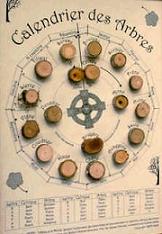 The tree calendar was called Beth-Luis-Nion, from the names of the first three trees of the year, Beth, the birch, Luis, the rowan, and Nion, the ash. Beth, Luis and Nion were three consonants in the early Irish alphabet, which contained thirteen of them, corresponding in Graves’ view to names of trees. The calendar as restored by him should be set out as follows:
The tree calendar was called Beth-Luis-Nion, from the names of the first three trees of the year, Beth, the birch, Luis, the rowan, and Nion, the ash. Beth, Luis and Nion were three consonants in the early Irish alphabet, which contained thirteen of them, corresponding in Graves’ view to names of trees. The calendar as restored by him should be set out as follows:
– B for Beth, the birch (“bouleau”): 24 December-20 January
– L for Luis, the rowan (“sorbier): 21 January-17 February
– N for Nion, the ash (“frêne”): 18 February-17 March
– F for Fearn, the alder (“aulne”): 18 March-14 April
– S for Saille, the willow (“saule”): 15 April-12 May
– H for Uath, the hawthorn (“aubépine”): 13 May-9 June
– D for Duir, the oak (“chêne”): 10 June-7 July
– T for Tinne, the holly (“houx”): 8 July-4 August
– C for Coll, the hazel (“noisetier”): 5 August-1 September
– M for Muin, the vine (“vigne”): 2 September-29 September
– G for Gort, the ivy (“lierre”): 30 September-27 October
– P for Peith, the whitten : 28 October-24 November
– R for Ruis, the elder (“érable”): 25 November-22 December
The calender was based on the lunar months of twenty-eight days, comprised only 364 days.
There thus remained an intercalated day, 23 December, the eve of the winter solstice in this calendar. This was the most ill-omened day of all because it was then that the year died. It was consequently represented by the yew, the death-tree. The following day, however, 24 December, when the sun begins again to climb towards its zenith, the time of Christmas and the birth of the Divine Child, was governed by the silver fir, the birth-tree.
The trees in the tree calendar were not chosen at random. Each one was associated with the month when it was at the height of its beauty, in flower or bearing fruit. Account was also taken of the correspondence between the symbolic value of each species and the time of the year associated with it.
Does any trace remain of this tree calendar? If February is the only month to have retained the same number of days as the lunar month, plus one intercalated and therefore ill-omened day every four years, it is because it was formerly the month of great purifications whereby preparations were made for the rebirth of the vegetation and the approach of more clement weather. May gave its name to the may tree, generally the hawthorn, as in the tree calendar, which was planted all over Europe on the occasion of festivities among village communities in order to celebrate the triumph of spring over winter. And as for the silver fir of 24 December, it has become our Christmas tree.
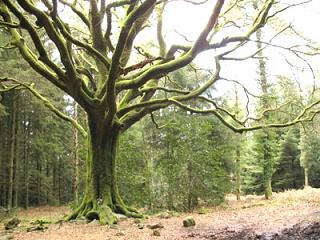
What lessons can be drawn from this multiplicity of beliefs whose universal character we have just seen? If we considered trees to be divine, attributed souls to them and treated them as models for human beings, would we not be yielding to superstitions from another age, to obscure, outdated beliefs unworthy of a civilization that purports to be rationalistic, scientific and strictly materialistic? In fact, however, it is the scientists themselves who are beginning to call into question this dismissive attitude. In the 1920s, an eminent Indian physiologist and botanist, Sir Jagadis Chandra Bose, demonstrated by experiment that plants have a real sensibility and a capacity for memorizing which correspond to a very rudimentary form of mental life. His experiments have since been verified and supplemented by American and especially by Soviet scientists. In other words, the watertight divisions that, in the name of an excessive rationalism, were thought to exist between plants and animals, and between animals and human beings, appear >;unfounded. In a less controversial area, phytotherapists and ethnobotanists are at present regaining acceptance for traditional plant remedies, virtually abandoned not so long ago, many of which derive from trees. In many cases it can even be said that certain superstitions of bygone days are now acknowledged to be based on real observation.
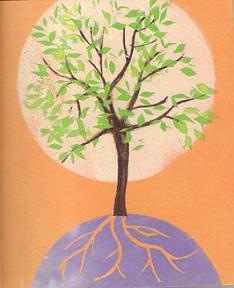
The Swiss psychologist and psychiatrist Carl Gustav Jung (1875-1961) showed that the image of the tree still survives as an archetype in the individual and collective unconscious. Indeed, it is one of the most fertile, vital and universal symbols. In a time of crisis like the present, it is in himself that man might usefully rediscover the meaning of that image and at the same time recover a sense of union with Nature, of cosmic harmony which, unhappily for him, he has often lost.
– Courrier de l’UNESCO, Janvier 1989, par Jacques Brosse.
COPYRIGHT 1989 UNESCO
COPYRIGHT 2004 Gale Group




